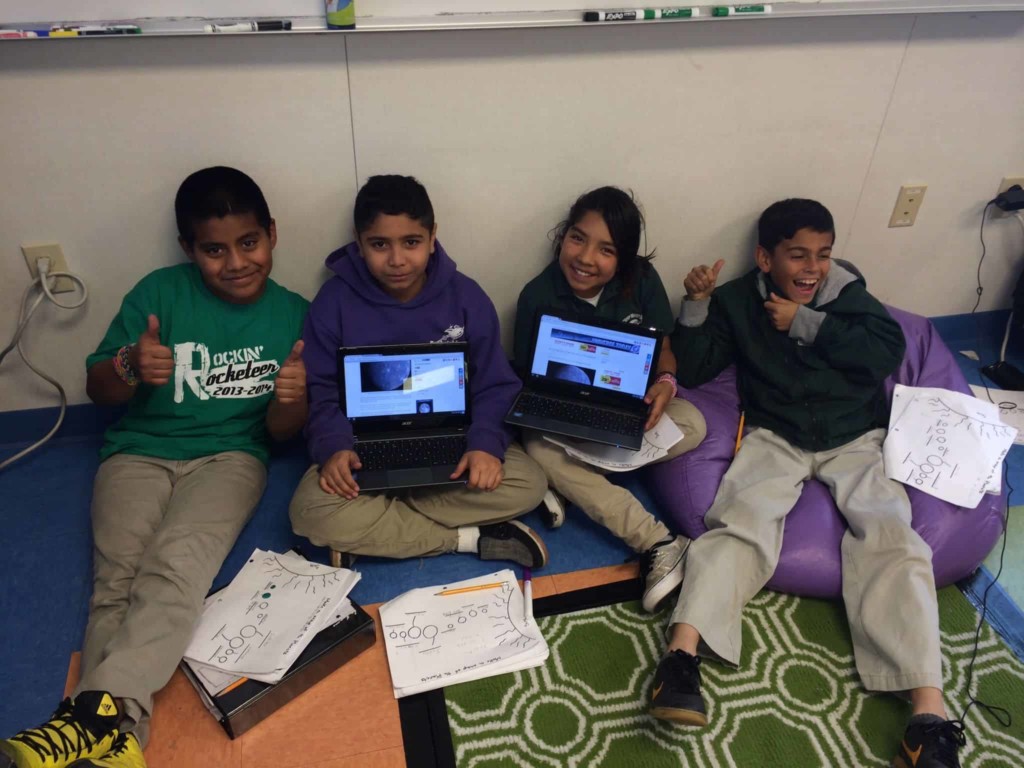EdTech: Extending the Teacher

By: Marcello Sgambelluri
Over the past few years I have begun to integrate a lot of technology into my first grade classroom, data analysis, and family engagement strategies. I have seen some real wins, and also have seen some real weaknesses. What follows is four ways technology has changed my teaching, and ways I would like to see EdTech change in the future. It’s a world wide web out there, go exploring:
1. Robots: endless patience and time. A computer will never be frustrated or lose patience with a student (not to say I or any of you lose patience, ever). In my classroom, using adaptable technology, like Dreambox or Lexia, students can practice long vowel sounds as many times as they need to. I, as a teacher, may not be able to practice every single letter sound a student doesn’t know one-on-one with each of my twenty-four students. Organizing over 30 phonemes or over 200 sight words for each student is a prolific task for a teacher, but for a computer, it’s easy. A computer can practice as many times as the student needs, in different and adaptive ways. This frees up teachers to help students master more rigorous and complex skills, as not every skill is rote.
2. Computers help extend “Go Go Gadget Legs” Remember the cartoon detective, who would press a button to suddenly extend his legs or arms, or release some perfect gadget, to quickly rise to the challenge? In learning, rote skill practice begins to break down in later elementary, after multiplication facts, basic numeracy, and sound decoding have been mastered (however, there is much to be said for this regular practice for students coming in far behind in the older grades). Comprehension cannot be taught very effectively by a computer, but computers take on a new life as “extenders” of higher level thinking in the classroom. In my fifth grade classroom, my students used Google Drive accounts to create business plans and a pitch for a business they wanted to start using Google Docs and Google Presentation. I could check on all their progress from one computer sitting in bed at home, or on a plane, no papers needed in real time. This connectivity between teacher and students is powerful. This also goes for extending teachers; using Google Drive, teachers can share resources, collaborate on lessons, have shared focus area trackers, send each other surveys, or create agendas together.
3. The keyboard is mightier than the pen. Websites like Illuminate are making it easier to get large amounts of student data in a consumable form. These programs instantly and easily grade student work. They allow you to track exit slips everyday if you want (easily and quickly, you can even have students scan their own documents), or instantly grade large assessments in minutes for tens if not hundreds of students. This is huge; we can now spend grading time focusing on open response questions (a la Common Core). My first year of teaching, I still remember typing 1, 0, 1, 0, 1, 1,1 into Excel while grading assessments. Now I focus on the feedback that needs a professional brain, not a robot.
4. Every teacher can become a data “artist”. Using Excel, Illuminate, and Class Dojo, I create individual and personalized printouts for my students that compare their behavior to the rest of the class, or their estimated words read (based on homework completion) to the average words read in our class. These reports are anonymous and the only person that sees a student’s data is that student and their parents. This opening of data to students and parents, in a consumable way, has changed the way they understand and care about that data. On my printouts there is also always space for students to reflect on the data, take ownership, and think about malleable intelligence.
A brave new frontier. What hasn’t been done yet? All of this takes a lot of work on the teacher side, whether it is figuring out what students are working on, mastering computer programs, or flexing your “Excel muscle.” We need tech entrepreneurs to start making these websites play nice together and serve up data in a consumable and understandable way for teachers, students and their families. We also need more direct classroom implementation techniques, something like Google giving a concise overview on how to engage students in content creation through Google Drive. Lastly, and most dryly, we need infrastructure, computers and solid internet in every classroom in America. Technology has come a long way in changing the classroom, and still has a long way to go.
Marcello Sgambelluri is a teacher at Rocketship Mateo Sheedy Elementary School in San Jose, California, and is working on innovative ways to engage families through the use of technology and data. He has been the recipient of several awards including making it to the quarter finals of the Fishman Award for Superlative Classroom Practice ’12 and participated in fellowships including New Leaders, Flamboyan Family Engagement Fellows, Teach Plus and is a current fellow with the America Achieves Fellowship for Teachers and Principals. Follow him on twitter @ReflectTeach



0 Comments
Leave a Comment
Your email address will not be published. All fields are required.